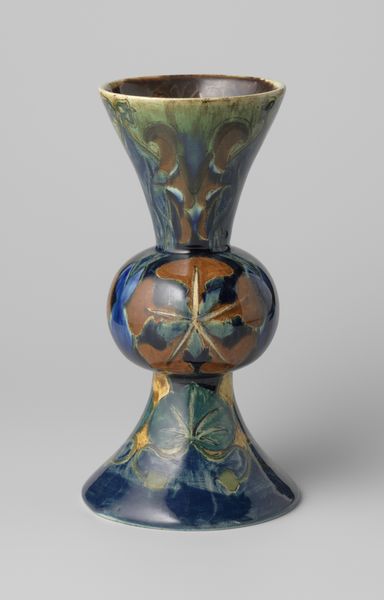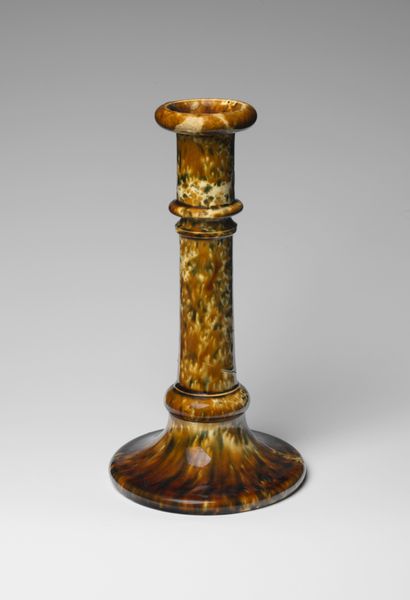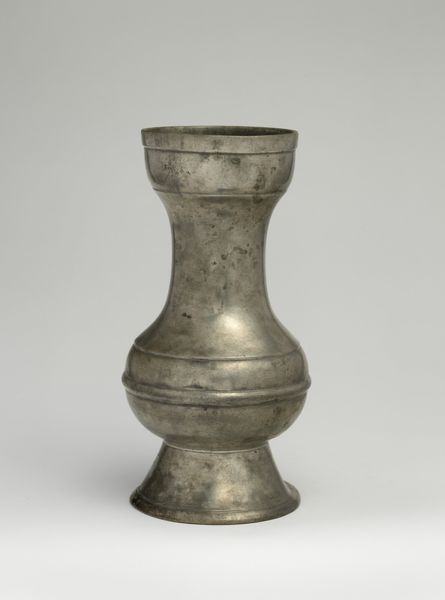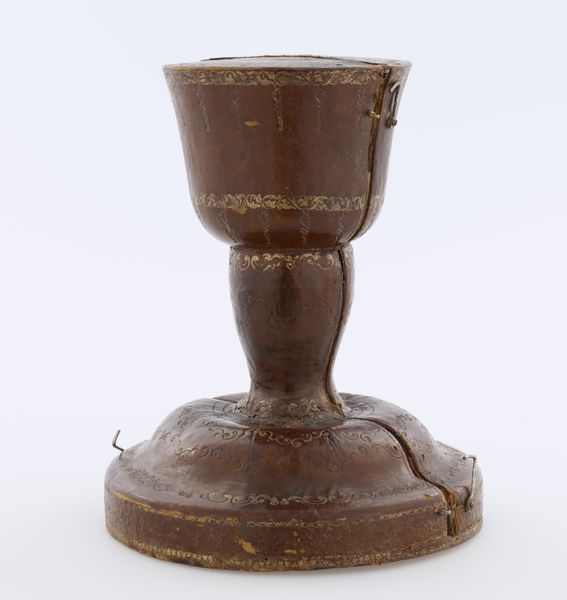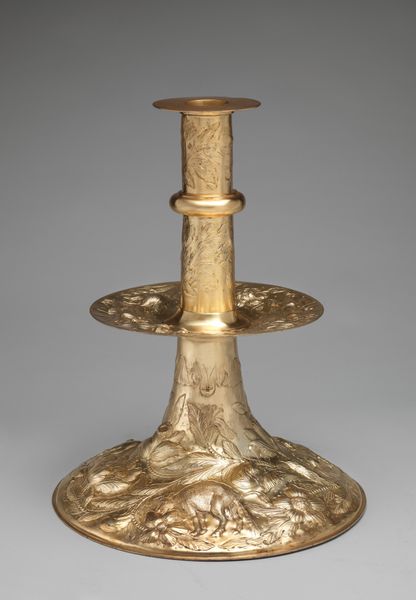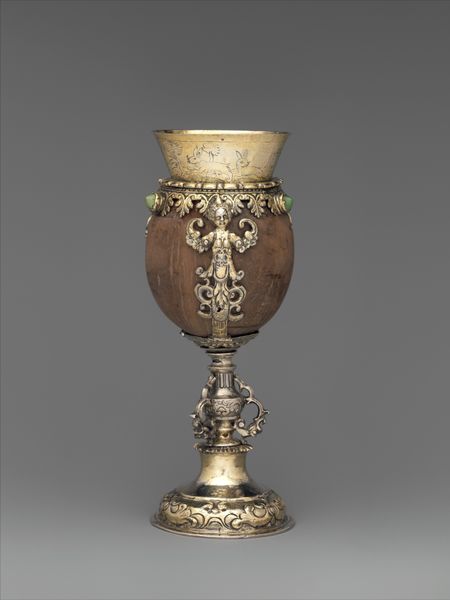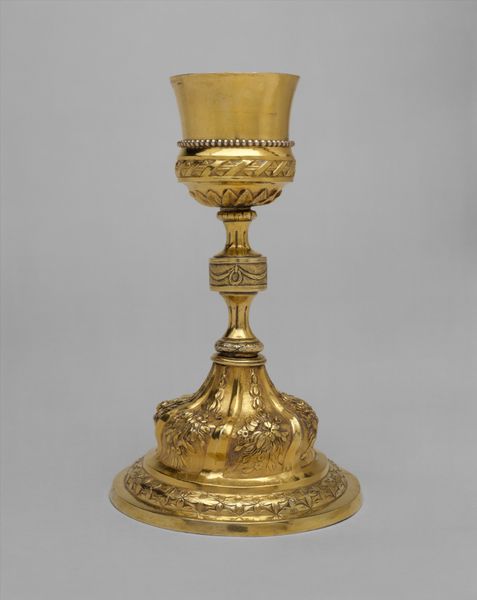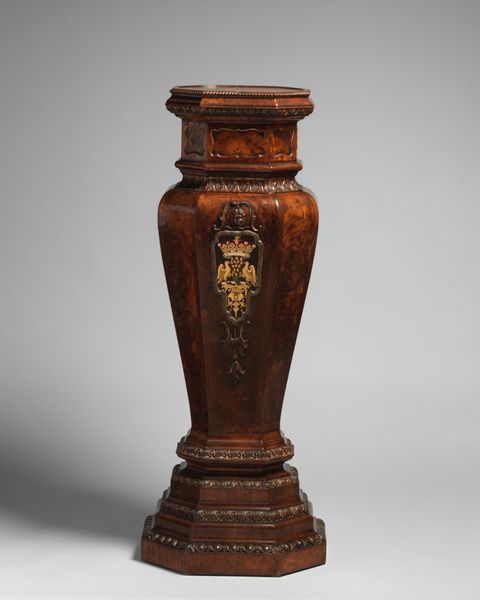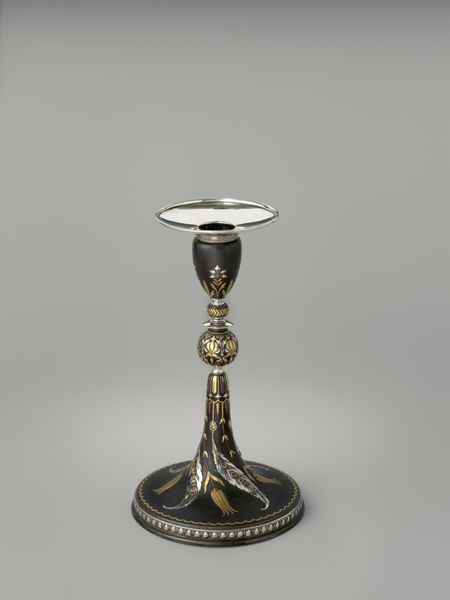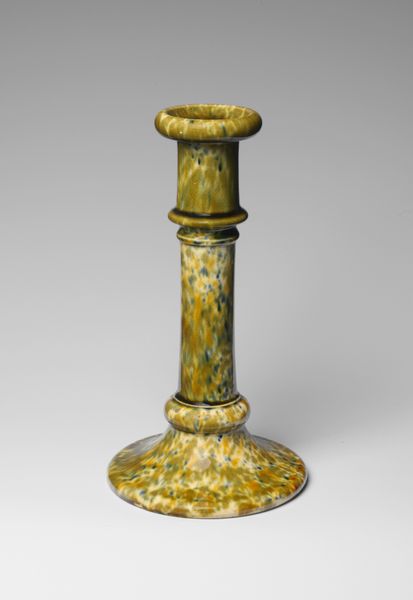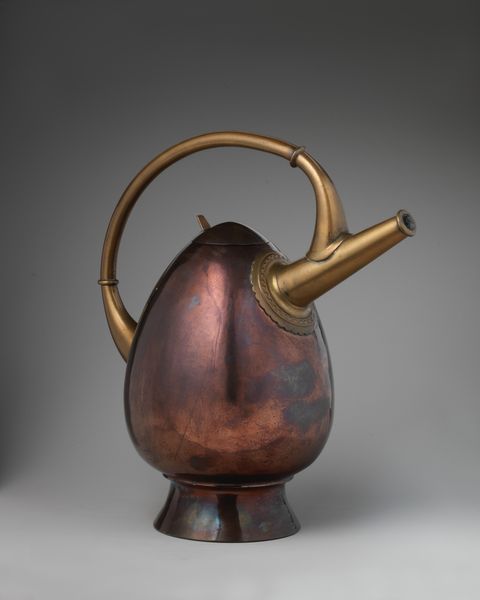
#
3d sculpting
#
3d model
#
3d printed part
#
plastic material rendering
#
virtual 3d design
#
front view render
#
3d shape
#
3d digital graphic
#
metallic object render
#
product render
Dimensions: height 16.4 cm, diameter 8.0 cm
Copyright: Rijks Museum: Open Domain
Curator: Here we have a vase, entitled "Vaas met een rozet in reliëf", crafted in 1888 by the N.V. Haagsche Plateelfabriek Rozenburg. Editor: It has a rather somber elegance to it. The muted earth tones and the contrast with the dark sections evoke a sense of subdued grandeur, doesn’t it? The rosette seems to guard a silent narrative. Curator: Absolutely. Rozenburg, established in The Hague, sought to elevate Dutch ceramics to compete with international standards. Pieces like this showcase an attempt to merge aesthetic beauty with commercial appeal in a rapidly industrializing society. Editor: The rosette is very prominent, isn't it? It is echoed throughout many ancient cultures, symbolizing secrecy, completion, or sometimes the heart. Is that prominence here suggesting an idealized, protected domesticity, a silent blossoming within the confines of home? Curator: Possibly. Considering the period, these symbolic elements likely played into Victorian ideals. Pottery experienced a popular surge through interior decoration, and Rozenburg would use their designs to represent Dutch industry at the World Fairs, attempting to demonstrate an artistic nationalism. Editor: Yes, that makes perfect sense when considering its original context! The colours and rosette motifs work in a balanced synergy. And with these earthy pigments, almost every colour appears to draw from themes of fertility. I would even argue that it seems less about display than some deeper, archetypal connection to the natural world. Curator: I think your analysis of it in that context highlights precisely Rozenburg’s ambitions—marrying ornamental design with national pride. A testament to Dutch design aspirations at the fin de siècle. Editor: I can see why the factory saw fit to display such a striking creation as this one, in effect a manifesto of visual principles. Curator: Indeed, the vase really speaks to Rozenburg's ambition to compete internationally through artful application of symbolic nationalism in pottery. Editor: Yes, truly more than mere material, here we feel art historical currents meet the symbolism of form, creating something of subtle power.
Comments
No comments
Be the first to comment and join the conversation on the ultimate creative platform.
